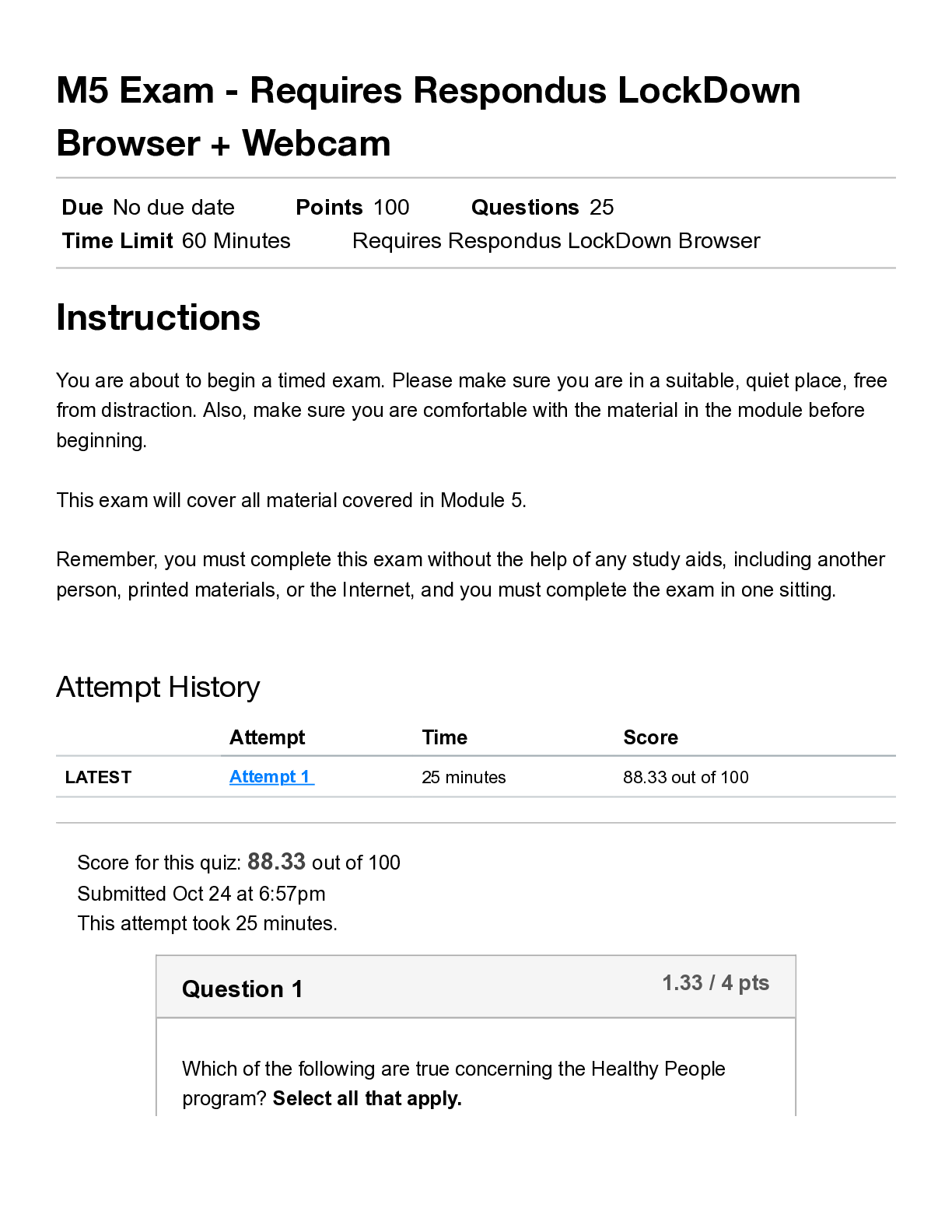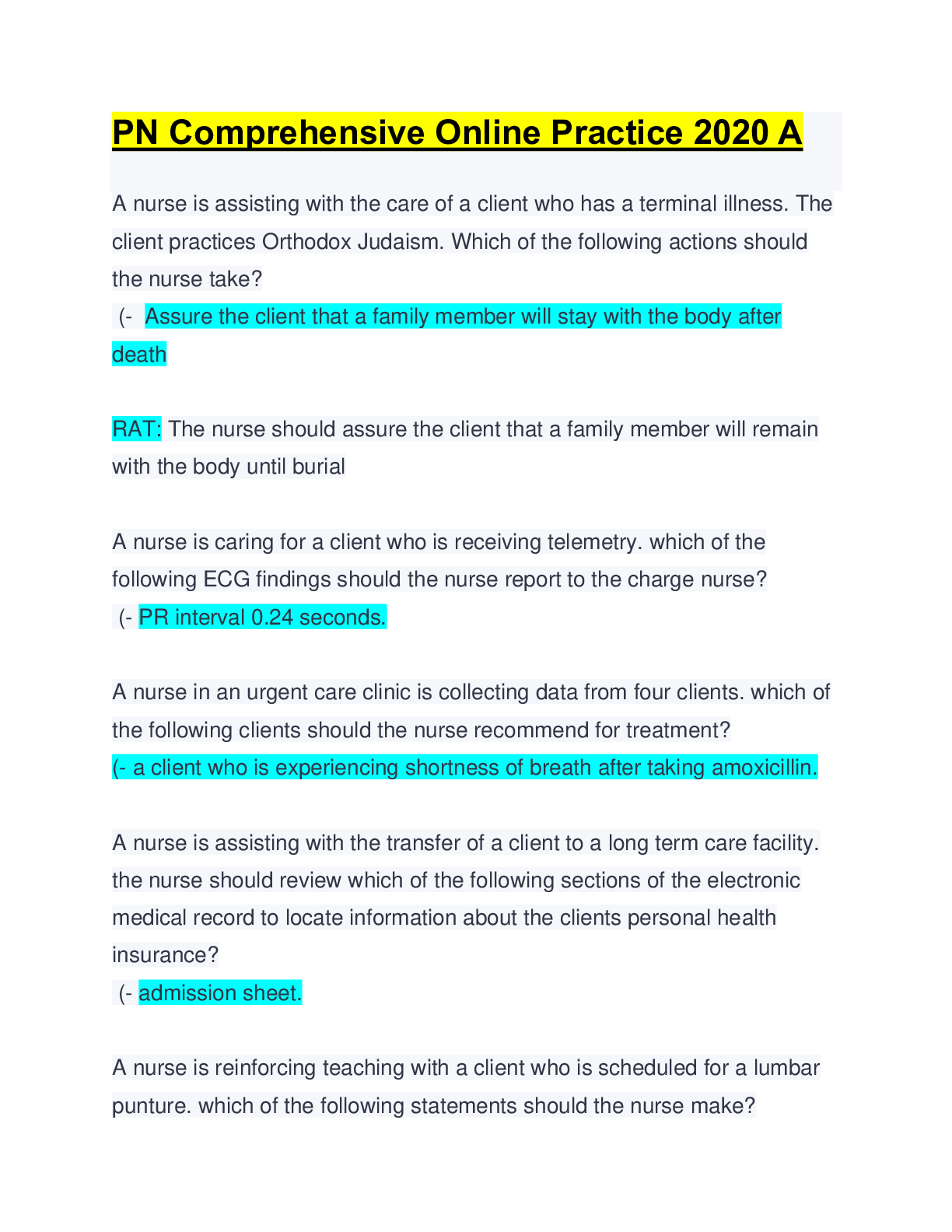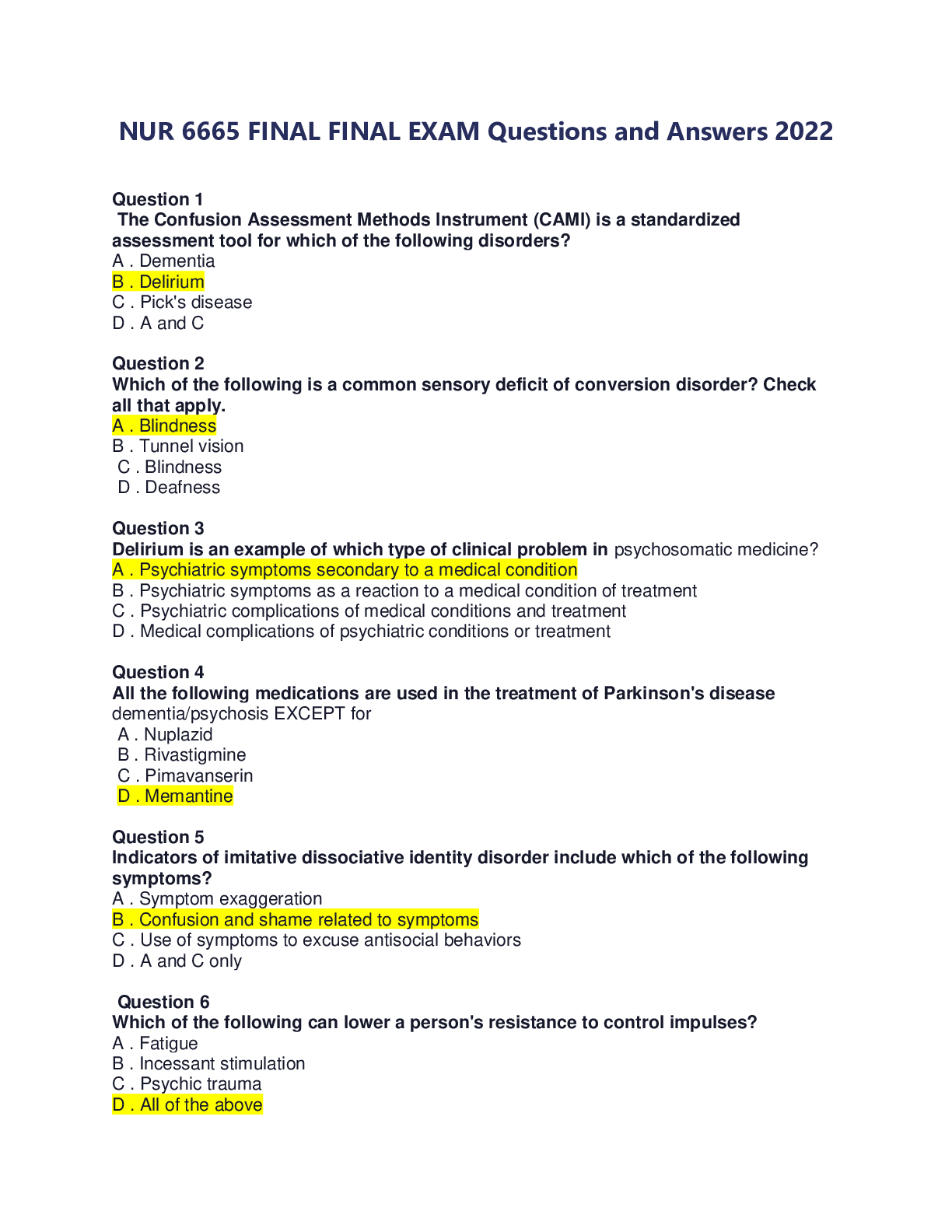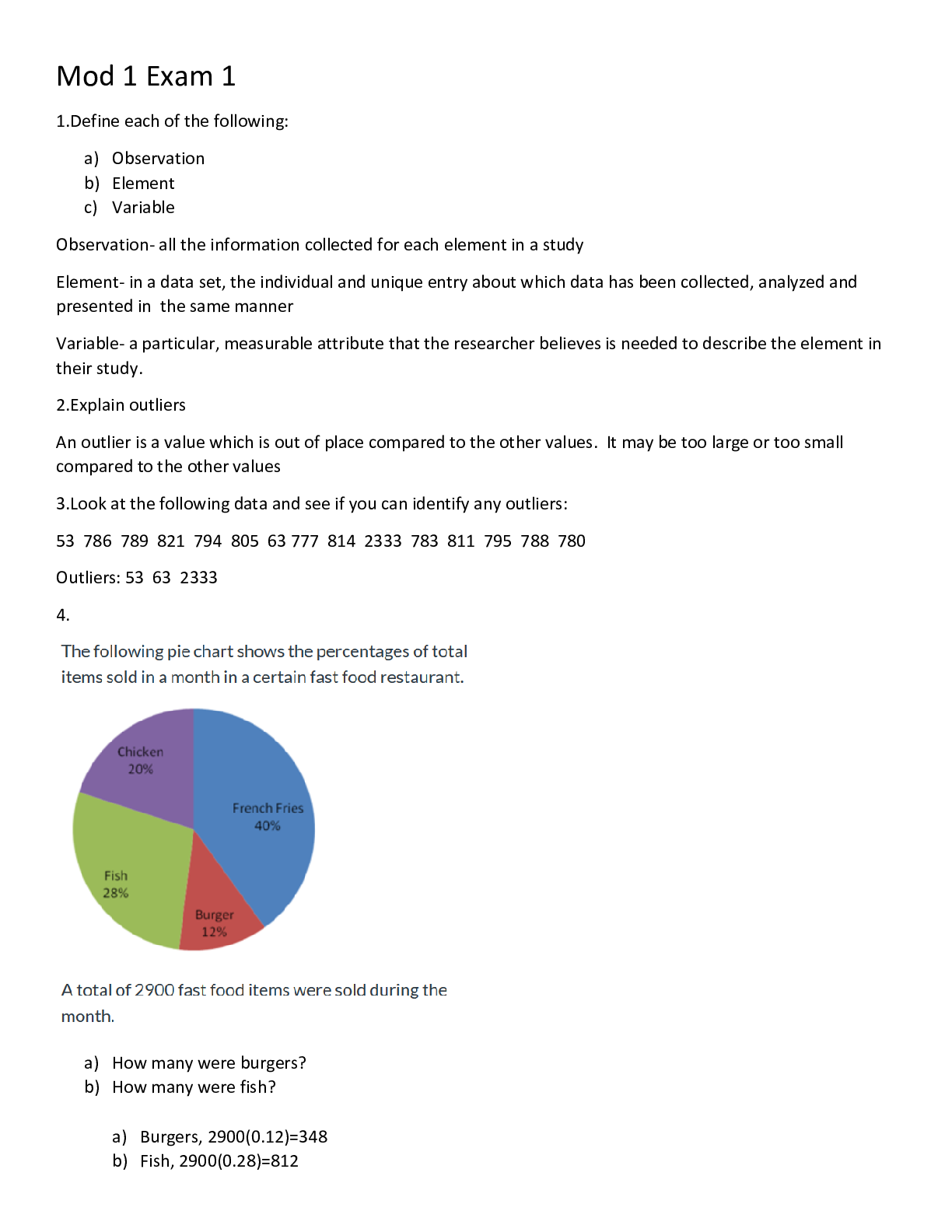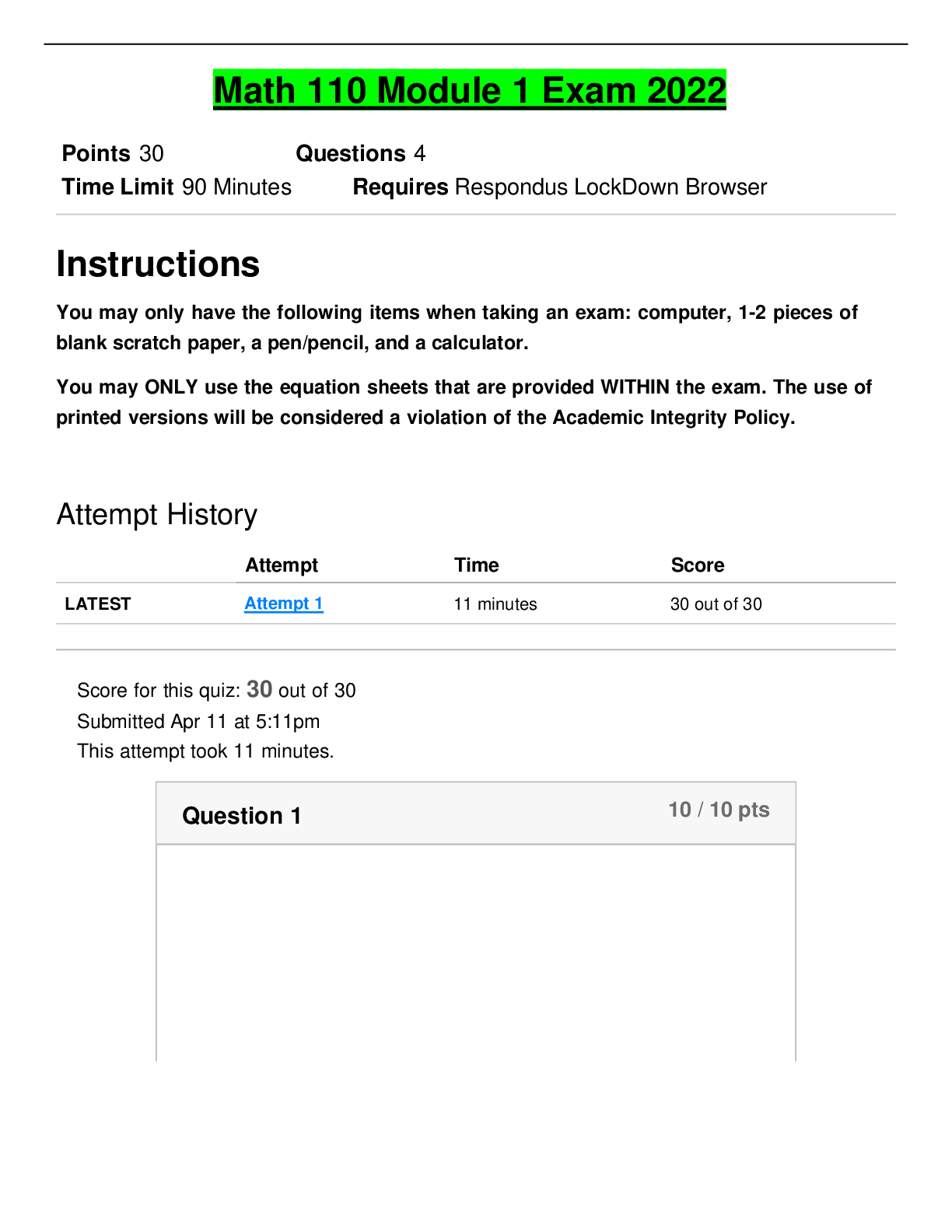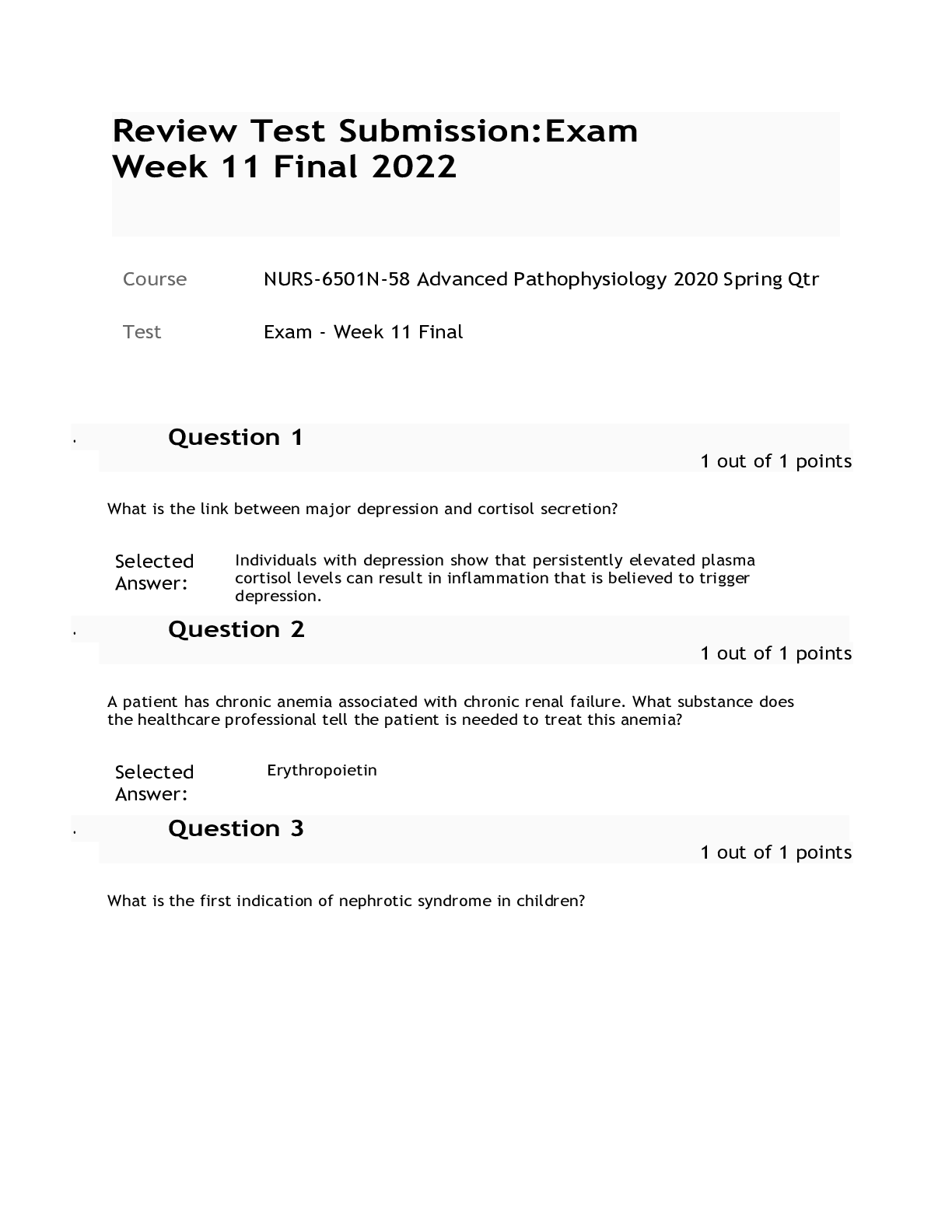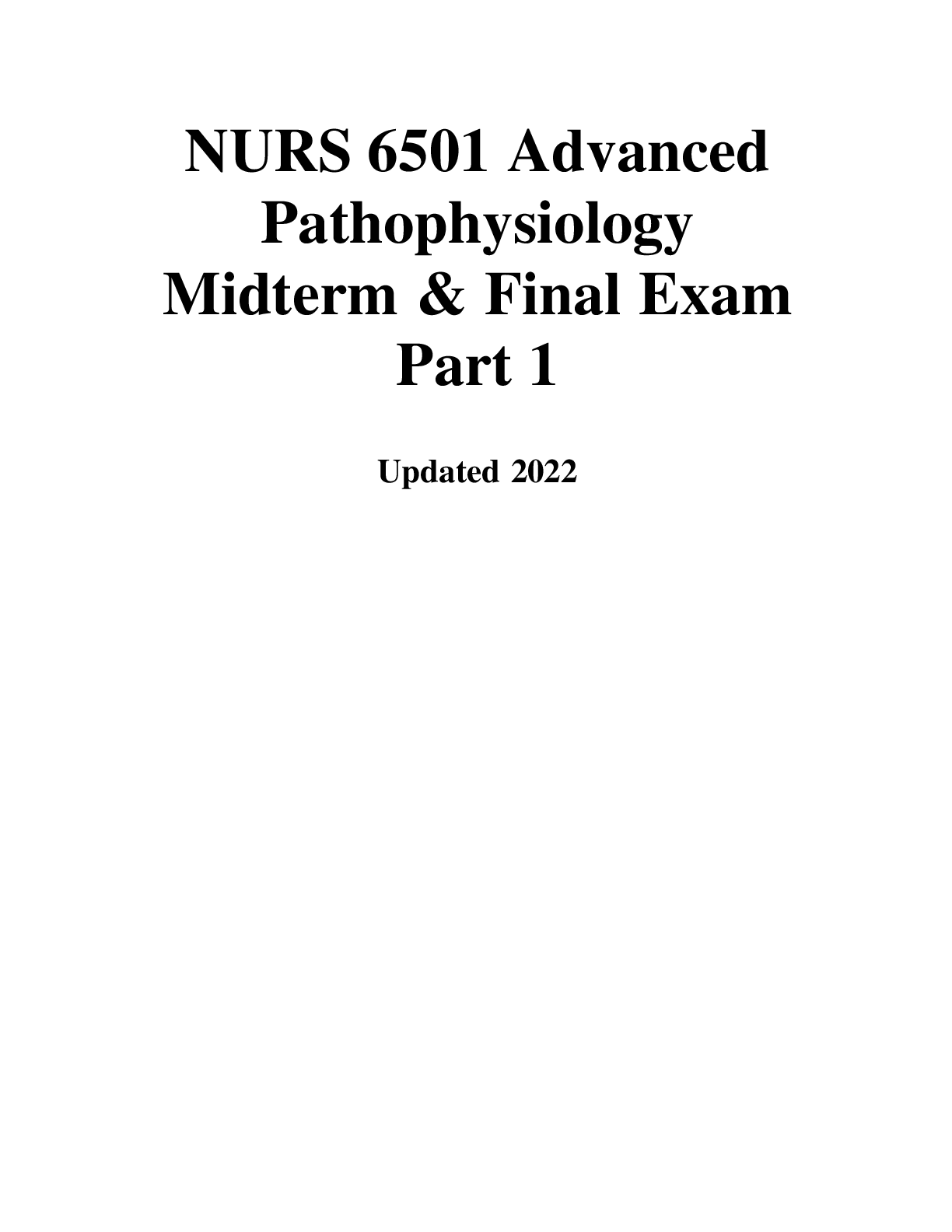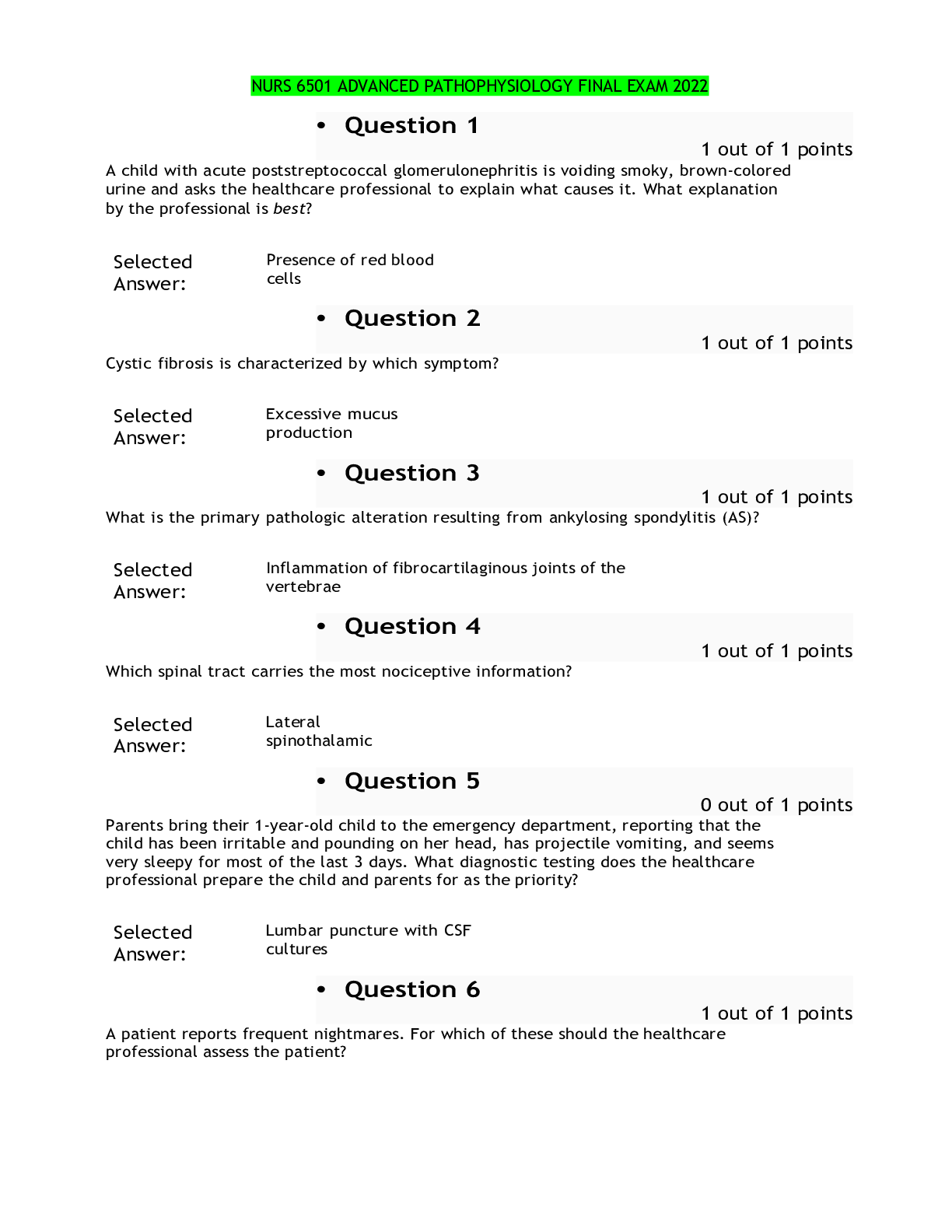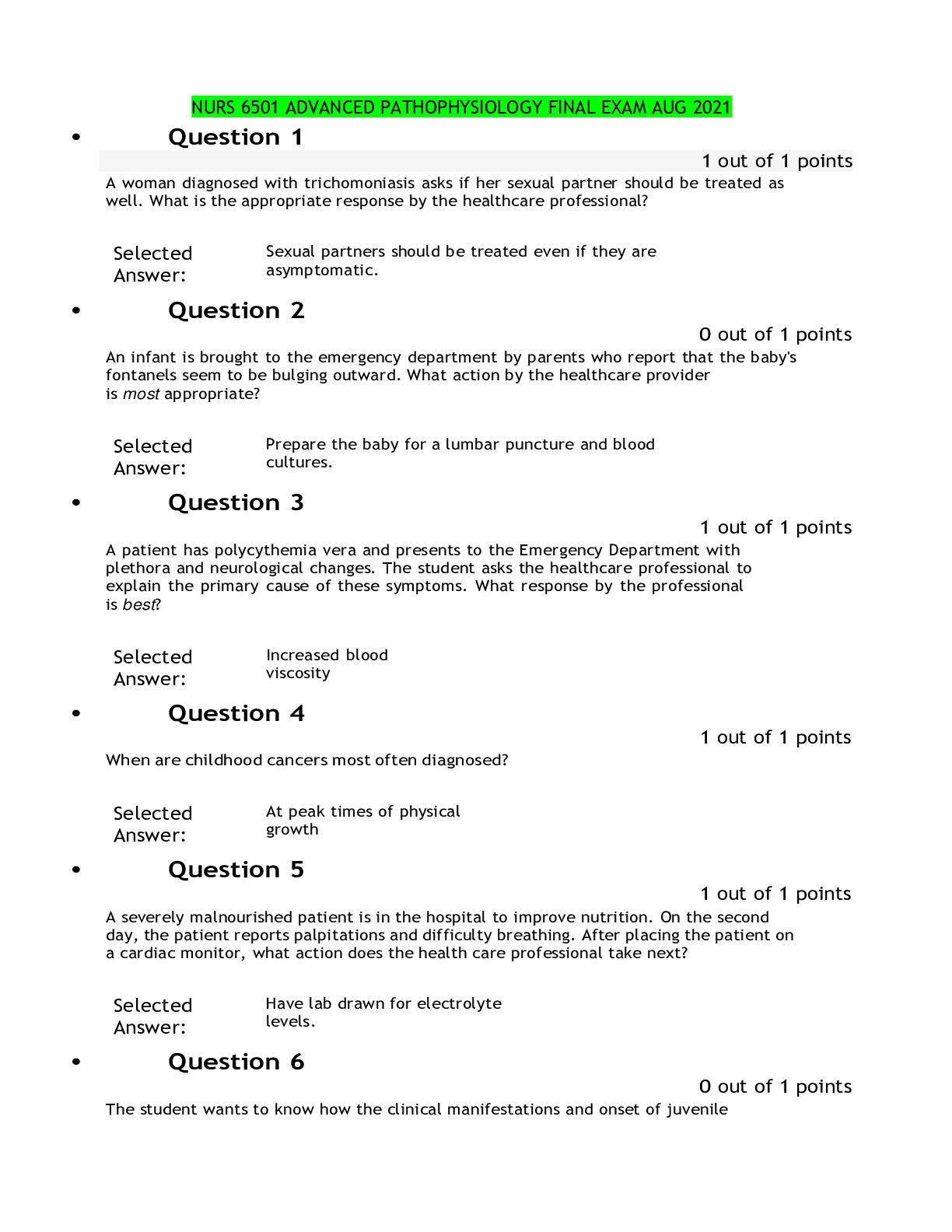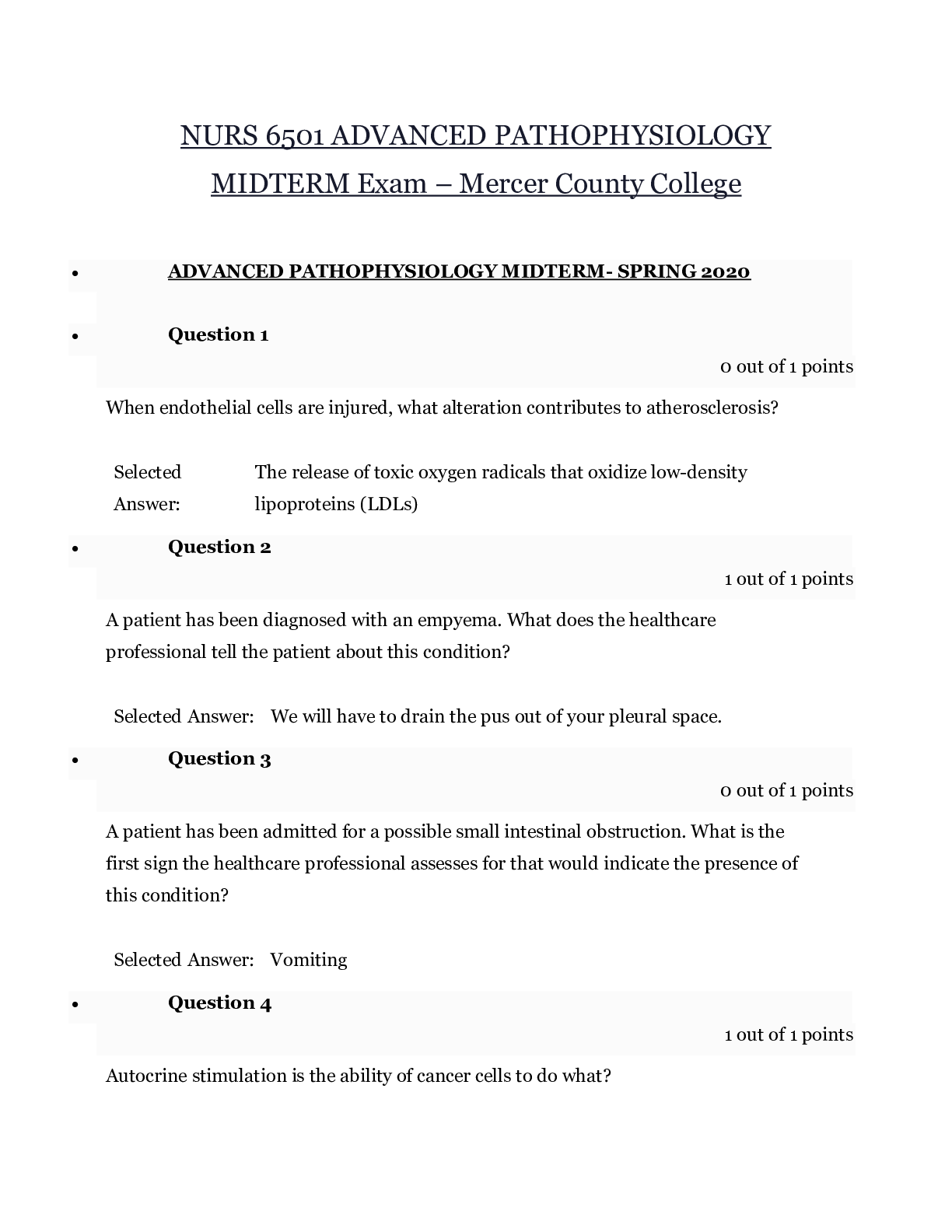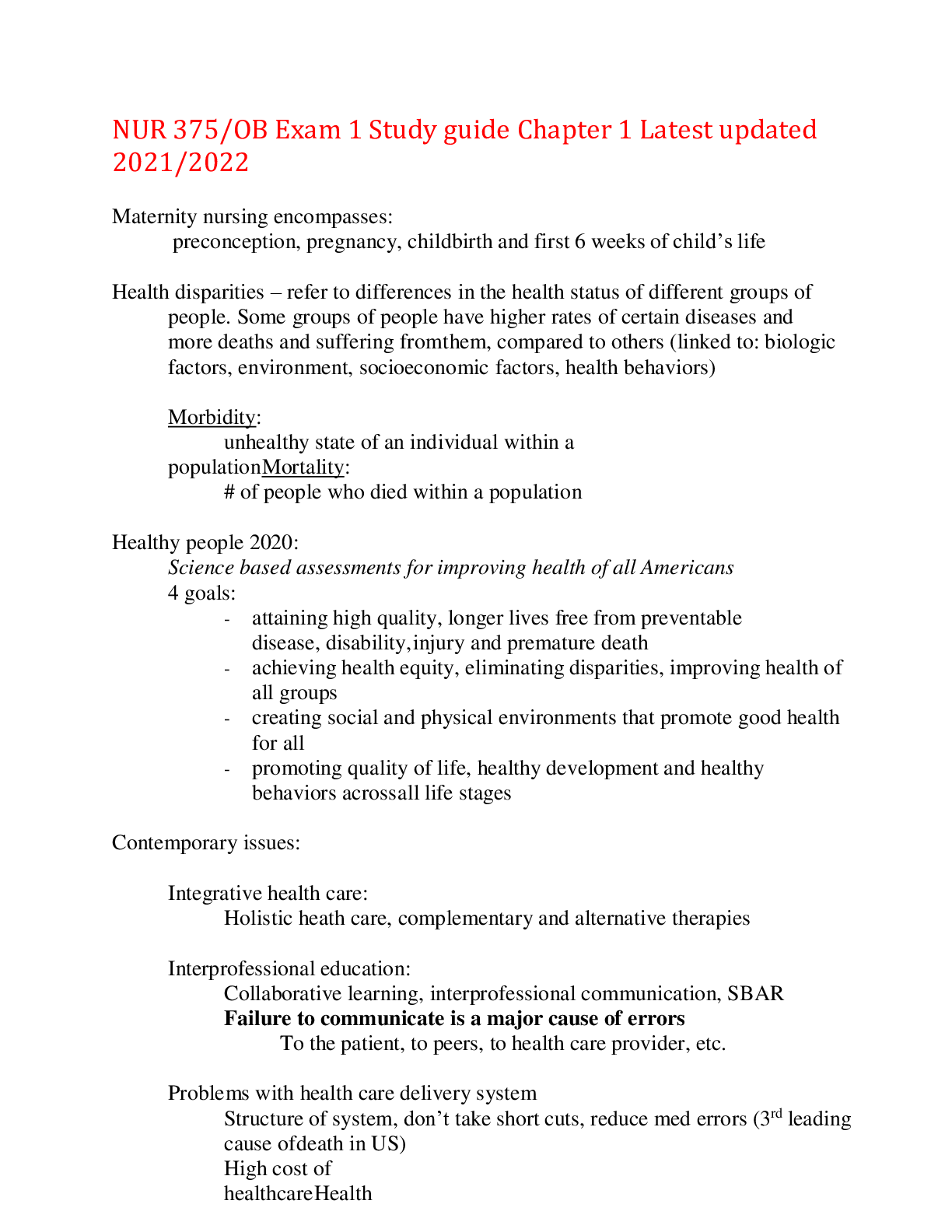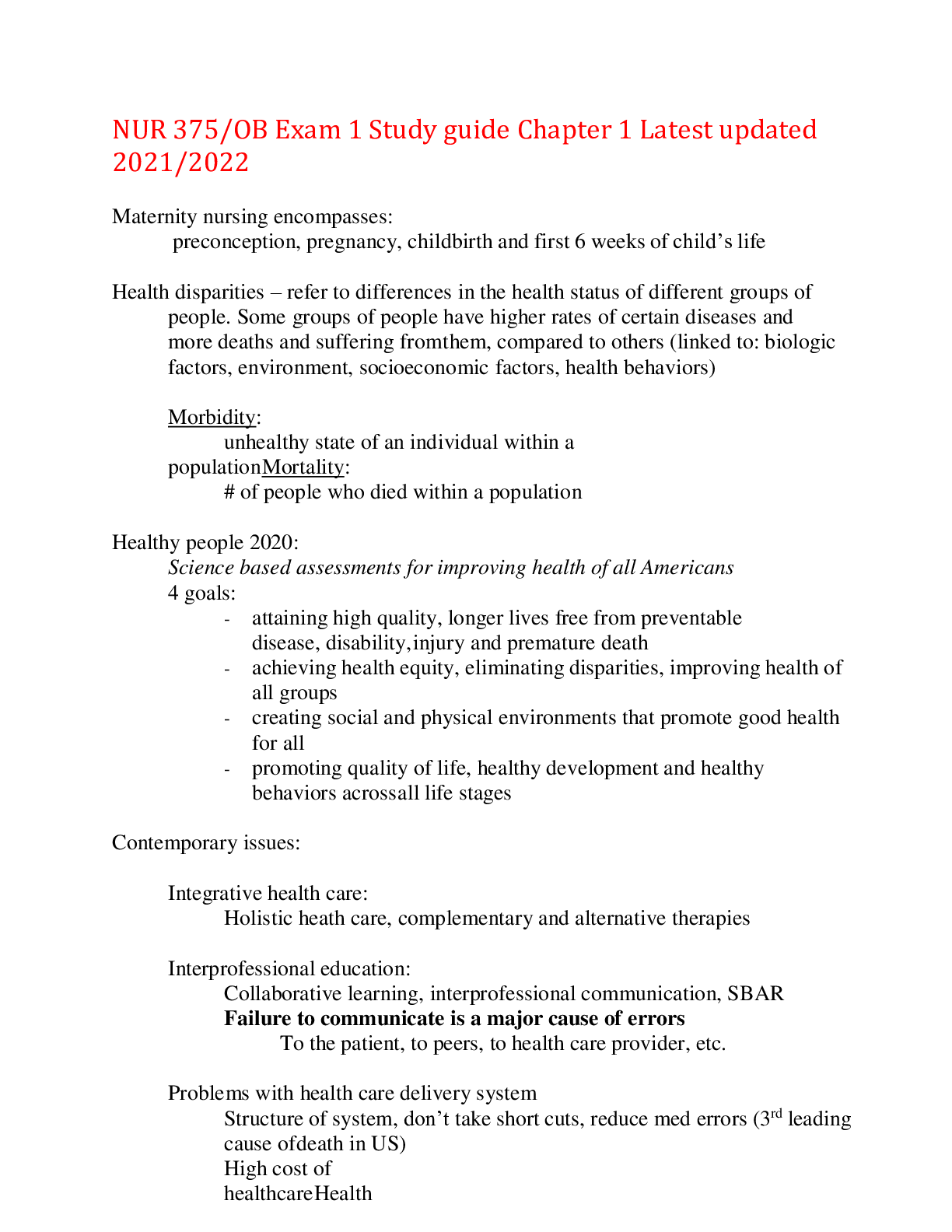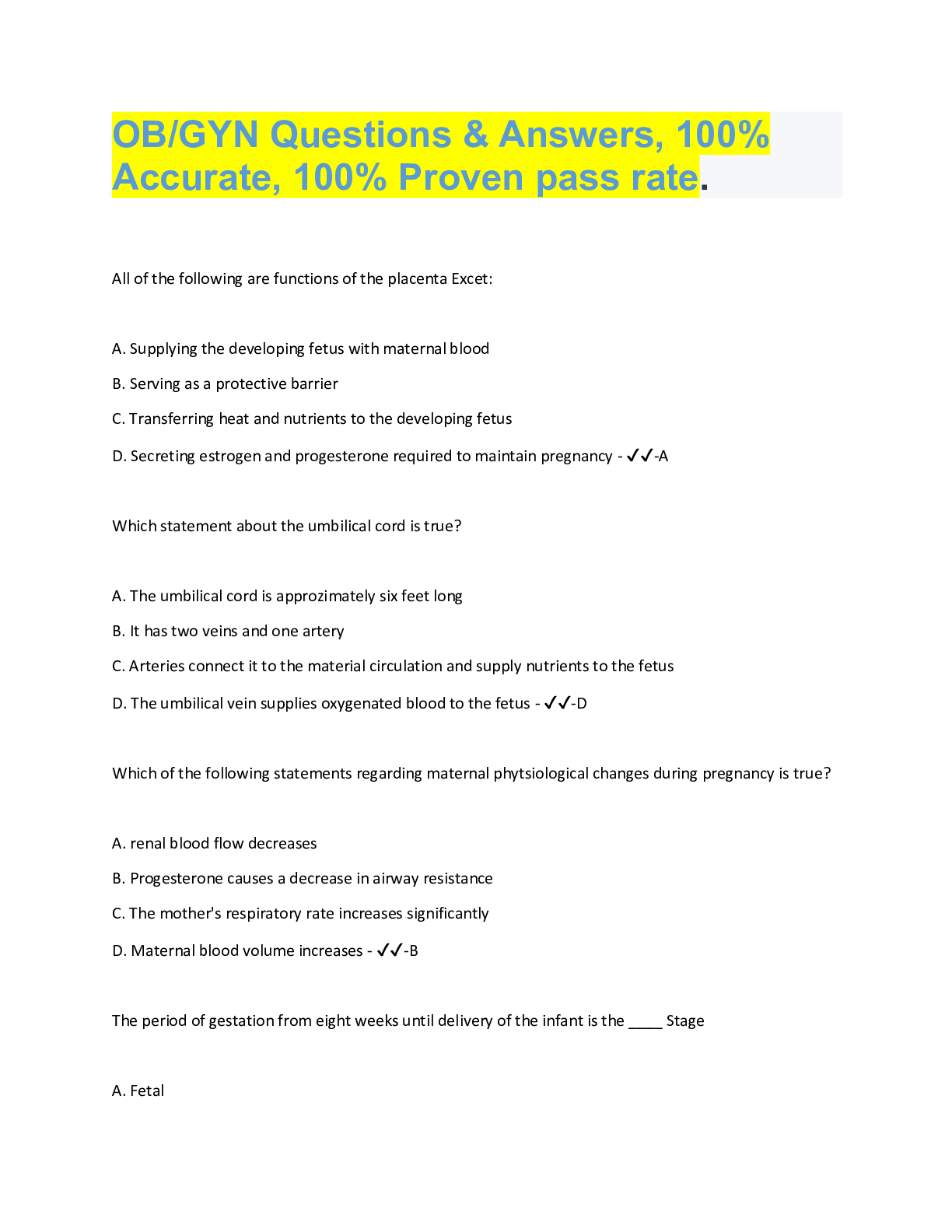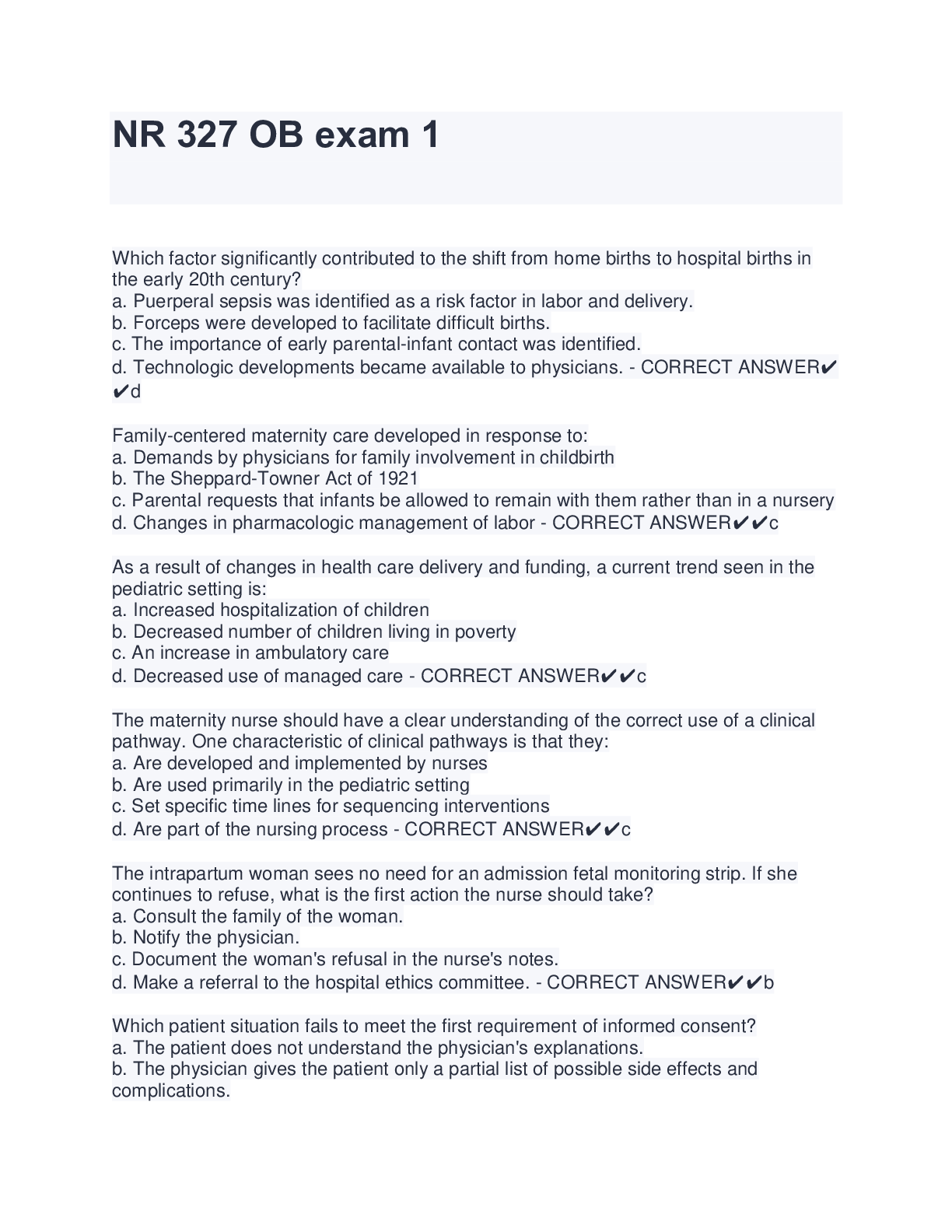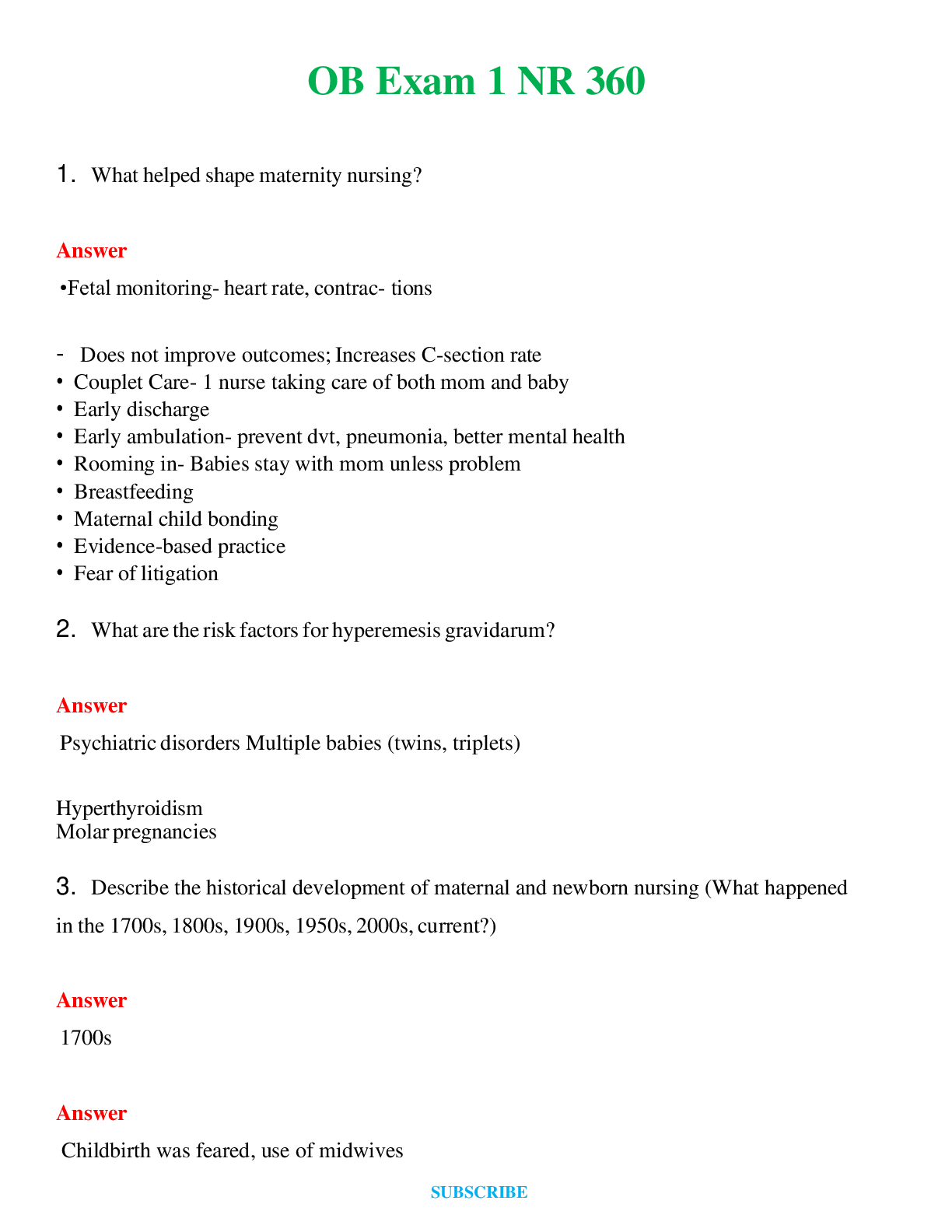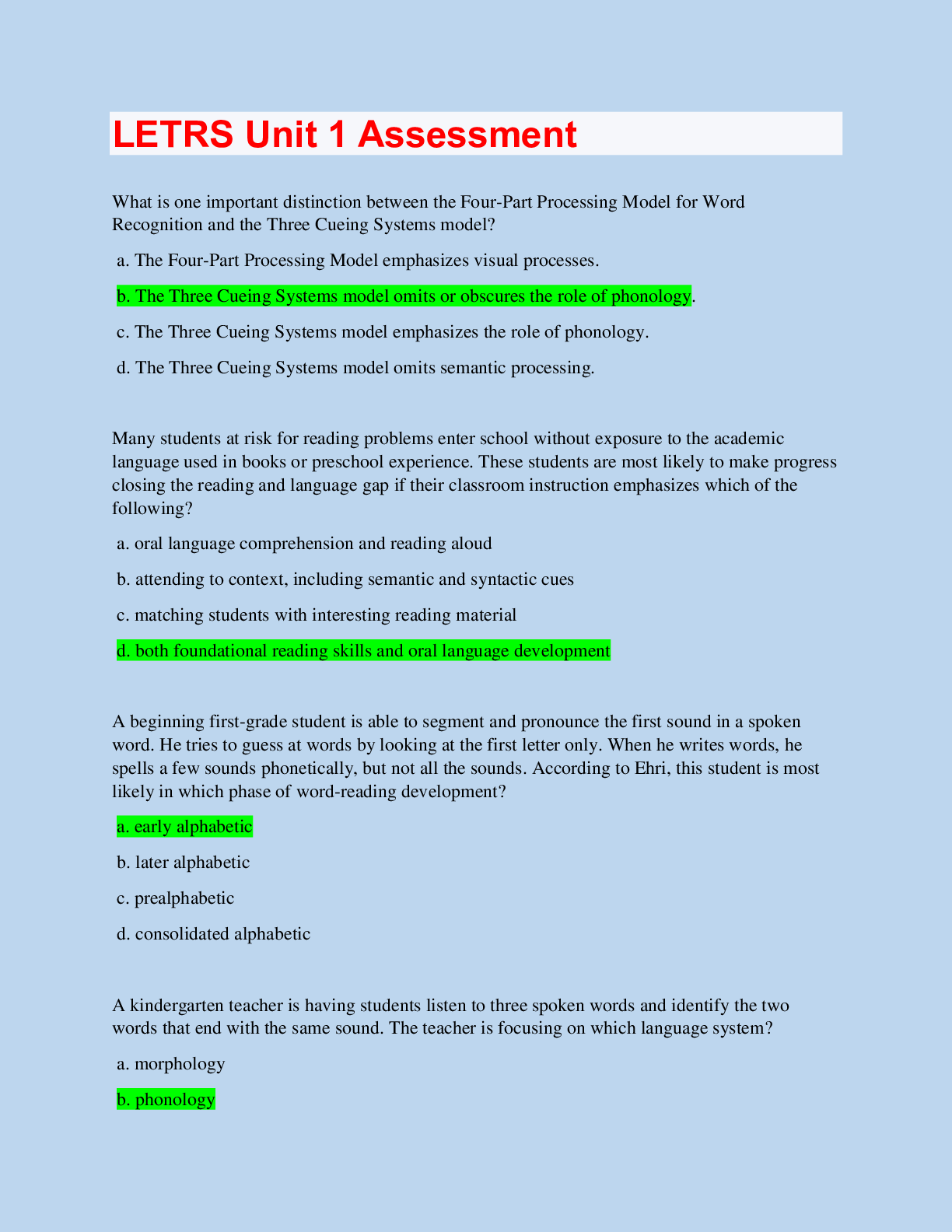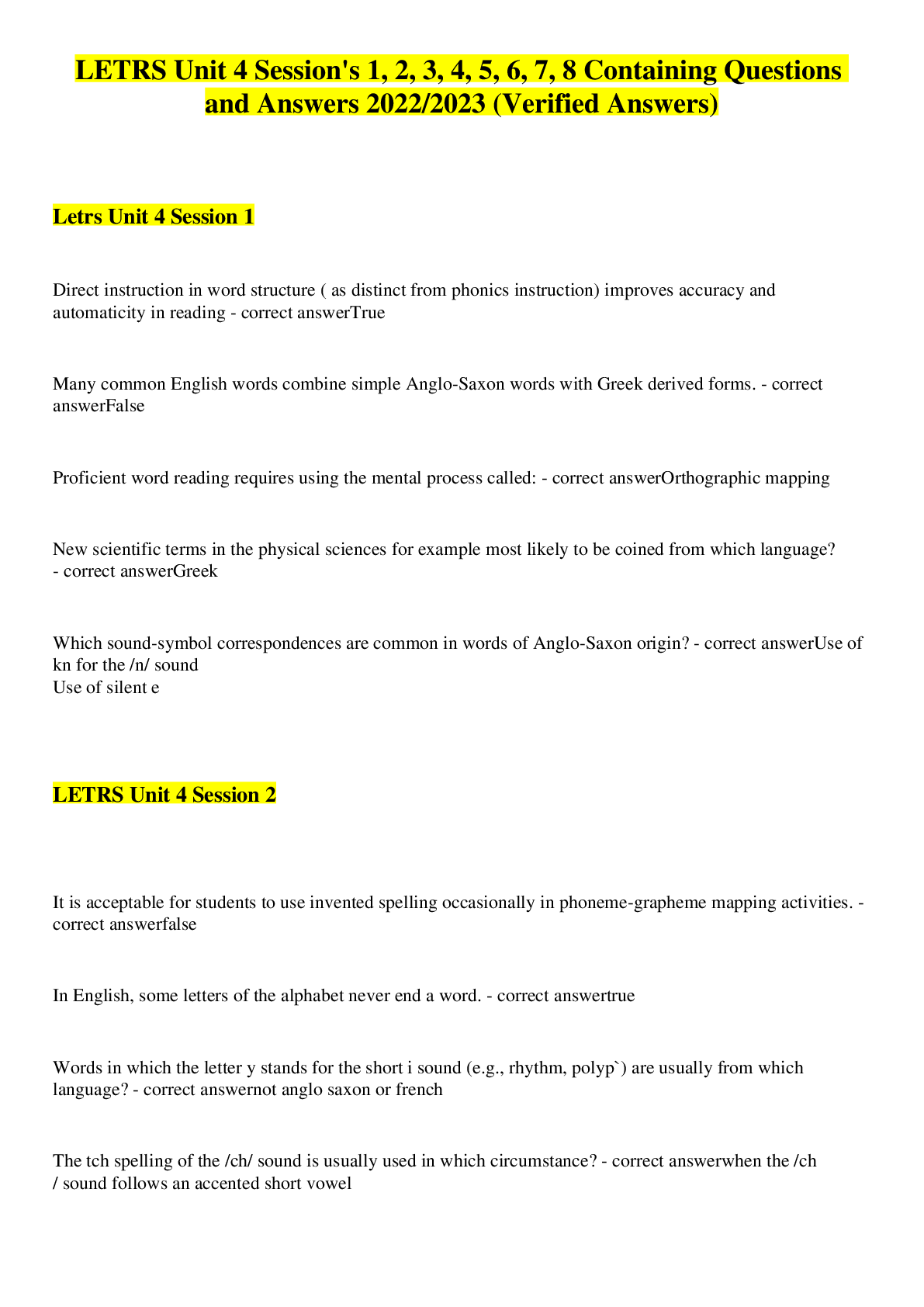OB 204 OB exam 1 review - Sauders
Document Content and Description Below
The nurse is preparing to teach a prenatal class about fetal circulation. Which statements should be included in the teaching plan? Select all that apply. 1. "The ductus arteriosus allows blood to b... ypass the fetal lungs." 2. "One vein carries oxygenated blood from the placenta to the fetus." 3. "The normal fetal heart tone range is 140 to 160 beats per minute in early pregnancy." 4. "Two arteries carry deoxygenated blood and waste products away from the fetus to the placenta." 5. "Two veins carry blood that is high in carbon dioxide and other waste products away from the fetus to the placenta." Rationale: The ductus arteriosus is a unique fetal circulation structure that allows the nonfunctioning lungs to receive only a minimal amount of oxygenated blood for tissue maintenance. Oxygenated blood is transported to the fetus by one umbilical vein. The normal fetal heart tone range is considered to be 110 to 160 beats per minute. Arteries carry deoxygenated blood and waste products from the fetus, and the umbilical vein carries oxygenated blood and provides oxygen and nutrients to the fetus. Blood pumped by the embryo's heart leaves the embryo through two umbilical arteries. The nursing instructor asks the student to describe fetal circulation, specifically the ductus venosus. Which statement by the student indicates an understanding of the ductus venosus? 1. "It connects the pulmonary artery to the aorta." 2. "It is an opening between the right and left atria." 3. "It connects the umbilical vein to the inferior vena cava." 4. "It connects the umbilical artery to the inferior vena cava." Rationale: The ductus venosus connects the umbilical vein to the inferior vena cava. The foramen ovale is a temporary opening between the right and left atria. The ductus arteriosus joins the aorta and the pulmonary artery. A pregnant client tells the clinic nurse that she wants to know the sex of her baby as soon as it can be determined. The nurse informs the client that she should be able to find out the sex at 12 weeks' gestation because of which factor? 1. The appearance of the fetal external genitalia 2. The beginning of differentiation in the fetal groin 3. The fetal testes are descended into the scrotal sac 4. The internal differences in males and females become apparent Rationale: By the end of the twelfth week, the external genitalia of the fetus have developed to such a degree that the sex of the fetus can be determined visually. Differentiation of the external genitalia occurs at the end of the ninth week. Testes descend into the scrotal sac at the end of the thirty-eighth week. Internal differences in the male and female occur at the end of the seventh week. The nurse is performing an assessment on a client who is at 38 weeks' gestation and notes that the fetal heart rate (FHR) is 174 beats/minute. On the basis of this finding, what is the priority nursing action? 1. Document the finding. 2. Check the mother's heart rate. 3. Notify the health care provider (HCP). 4. Tell the client that the fetal heart rate is normal. Rationale: The FHR depends on gestational age and ranges from 160 to 170 beats/minute in the first trimester, but slows with fetal growth to 110 to 160 beats/minute near or at term. At or near term, if the FHR is less than 110 beats/minute or more than 160 beats/minute with the uterus at rest, the fetus may be in distress. Because the FHR is increased from the reference range, the nurse should notify the HCP. Options 2 and 4 are inappropriate actions based on the information in the question. Although the nurse documents the findings, based on the information in the question, the HCP needs to be notified. The nurse is conducting a prenatal class on the female reproductive system. When a client in the class asks why the fertilized ovum stays in the fallopian tube for 3 days, what is the nurse's best response? 1. "It promotes the fertilized ovum's chances of survival." 2. "It promotes the fertilized ovum's exposure to estrogen and progesterone." 3. "It promotes the fertilized ovum's normal implantation in the top portion of the uterus." 4. "It promotes the fertilized ovum's exposure to luteinizing hormone and follicle-stimulating hormone." Rationale: The tubal isthmus remains contracted until 3 days after conception to allow the fertilized ovum to develop within the tube. This initial growth of the fertilized ovum promotes its normal implantation in the fundal portion of the uterine corpus. Estrogen is a hormone produced by the ovarian follicles, corpus luteum, adrenal cortex, and placenta during pregnancy. Progesterone is a hormone secreted by the corpus luteum of the ovary, adrenal glands, and placenta during pregnancy. Luteinizing hormone and follicle-stimulating hormone are excreted by the anterior pituitary gland. The survival of the fertilized ovum does not depend on it staying in the fallopian tube for 3 days. [Show More]
Last updated: 1 year ago
Preview 1 out of 99 pages
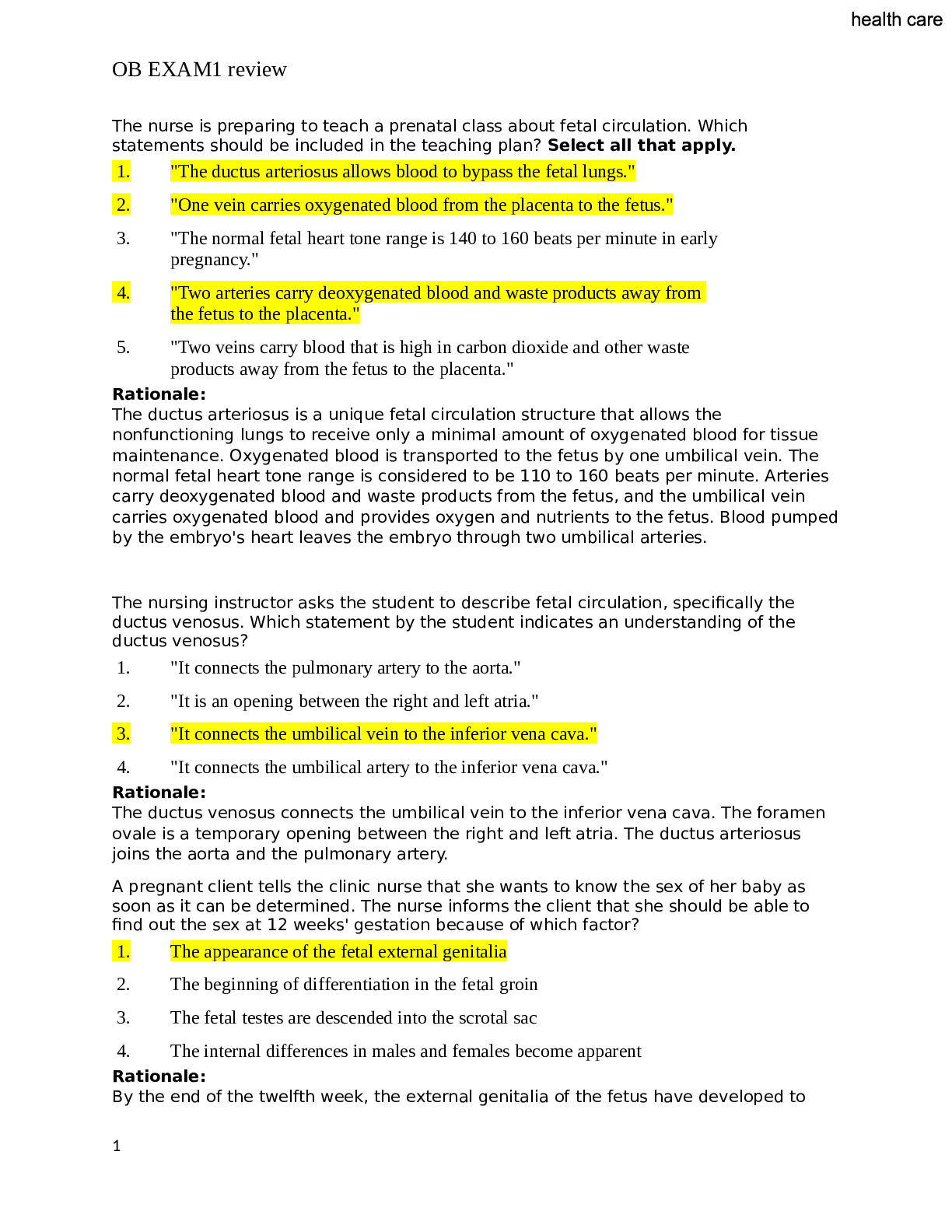
Reviews( 0 )
Document information
Connected school, study & course
About the document
Uploaded On
Oct 16, 2021
Number of pages
99
Written in
Additional information
This document has been written for:
Uploaded
Oct 16, 2021
Downloads
0
Views
58

